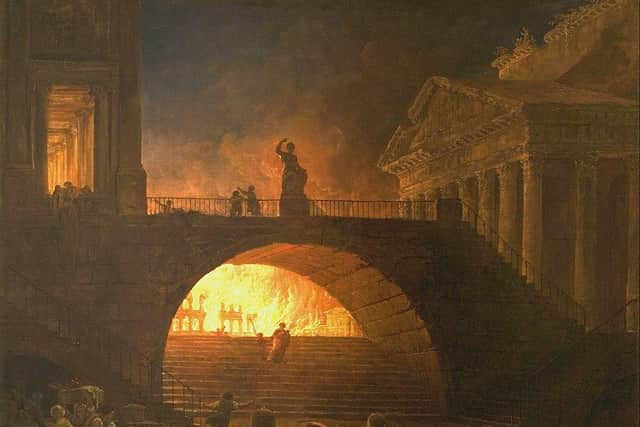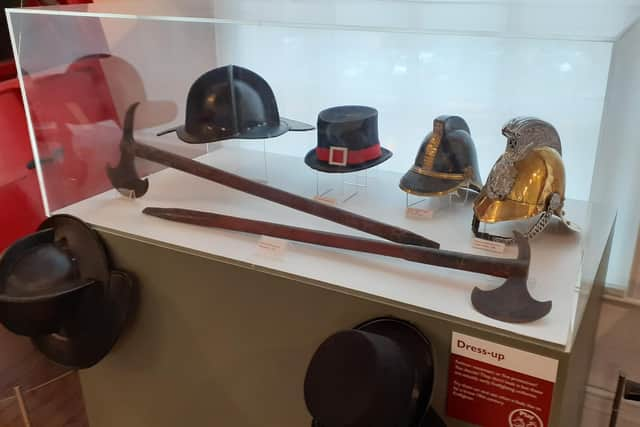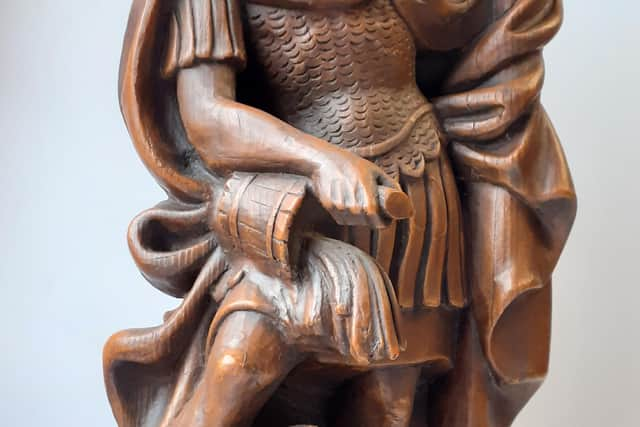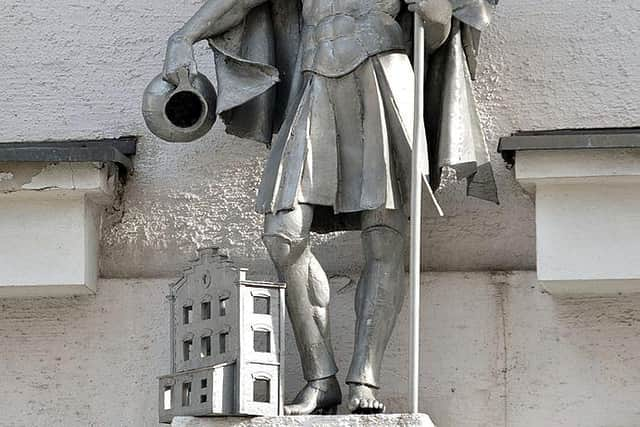National Emergency Services Museum: ‘Guardian angels’ looking over our heroic police, fire and ambulance crews
and live on Freeview channel 276
These national figures may be some of the best known patron saints, but many different professions, places and people have acquired their own divine protectors over the years. And there is evidence of the role of one of these lesser-known ‘guardian angels’ in the archives of the National Emergency Services Museum (NESM) in Sheffield.
In the museum’s collection is a 20th century wooden figure of St Florian that would once have watched over a fire station and its crew. Many stations had – and still have – statues or images of this martyr who became the patron saint of firefighters.
Advertisement
Hide AdAdvertisement
Hide AdResearch into the origins of the icon showed that St Florian was a commander of the Roman army in what is now Austria, who was executed for refusing to take part in the persecution of Christians.


It is believed that during his army service he was responsible for maintaining the area’s bucket brigades, and keeping a watch for fires. Legend says that during his life, St. Florian put out a massive fire with only one bucket of water, saving a village from ruin. As such, he is often depicted – as in the museum’s statue – holding a pitcher of water.
He also avoided being burned at the stake, unnerving his executioners by challenging them to light the fire so that he could climb on to it himself. Instead, St Florian was drowned in a river. When modern fire brigades were searching for their own patron saint, he proved to be the perfect candidate to adopt for brigades around the world.
It’s perhaps no surprise that patron saints offering divine assistance have been taken up by the emergency services both past and present, given that those serving with the fire brigade, police, ambulance service and others walk into danger on a day-to-day basis.
Advertisement
Hide AdAdvertisement
Hide AdIn fact the practice of turning to divine protection pre-dates Christianity; even the ancient forerunners of our emergency services had their heavenly helpers.


Long before the 999 services as we know them started to appear in the 19th century our ancestors still had to deal with disasters, and there are plenty of examples of people – like St Florian – who were officially tasked to help in emergency situations.
Given that religion in the ancient world famously had gods and goddesses for just about everything (including a Roman goddess of door hinges) it was natural that people working in these situations should call on the aid of some very specific divinities.
The ancient Roman world has particularly good examples in the realm of fire prevention. Rome itself, like many large cities, was under constant threat of fire.
Advertisement
Hide AdAdvertisement
Hide AdIn 64 AD huge swathes of the city had been destroyed in a blaze during which Emperor Nero famously ‘fiddled while Rome burned’.


The various ‘bucket brigades’ and watchmen whose duty it was to try and extinguish fires would no doubt have pleaded with Vulcan, the god of fire, for a safe resolution to any emergency.
Each summer, when the risk of major fires was greatest, the Romans held a festival, Vulcanalia, to appease the fire god, lighting their own bonfires to prevent him from needing to start his own!
This particular god is a familiar figure to modern Sheffielders too; Vulcan is also the god of metalworking and his statue sits atop the city’s town hall.
Advertisement
Hide AdAdvertisement
Hide AdThe Romans also had a goddess whose sole remit was the prevention of fire. Stata Mater was the goddess of protection against destructive fire, her name meaning ‘mother who stabilises’. Though not as famous as Vulcan she was well known in imperial Rome where her image adorned the Forum.


Many other civilisations had fire gods who were invoked to help guard against destructive blazes including the Greek Prometheus, the Titan god of fire, and the Norse Logi, or Halogi (‘High Flame’), a giant who personified fire itself.
Unsurprisingly the ancient gods are not commemorated so much by modern fire brigades but there is at least one emergency service today that still bears the mark of the past.
Many NHS ambulances – and others around the world – feature the image of a snake entwined around a staff. This symbol is the ‘Rod of Asclepius’ which derives from ancient Greek religion.
Advertisement
Hide AdAdvertisement
Hide AdAsclepius was the Olympian god of medicine and healing. The symbol has proven powerful enough to last. And, if you look hard enough, you can find many references to gods who would once have been called upon to avert catastrophe adorning modern emergency vehicles: Neptune has been, and remains, a popular name for coastguard vessels.
The saint many emergency services look to most often as a patron, however – including the police force, paramedics and coastguard – is not a human, but rather a heavenly being: the Archangel Michael.
St Michael has many patronages and is particularly associated with chivalry, and it is notable how many emergency services adopted him as a patron. Ambulance drivers and paramedics, police officers and coastguards have all looked to Michael as patron of those who work in dangerous conditions; the guardian angel of those whose job is to act as the public’s guardian angels.


Fascinating history like this is often revealed when the team at NESM dig into the origins of the objects in the museum’s collection. Much of this research helps to inform the museum’s exhibitions and galleries – covering everything from the history of firefighting to Victorian crime and punishment and World War I – or provides important background to enable the team to better care for the collection.
Discover some of this fascinating history yourself with a visit to NESM. Find more information about the museum at visitnesm.org.uk.